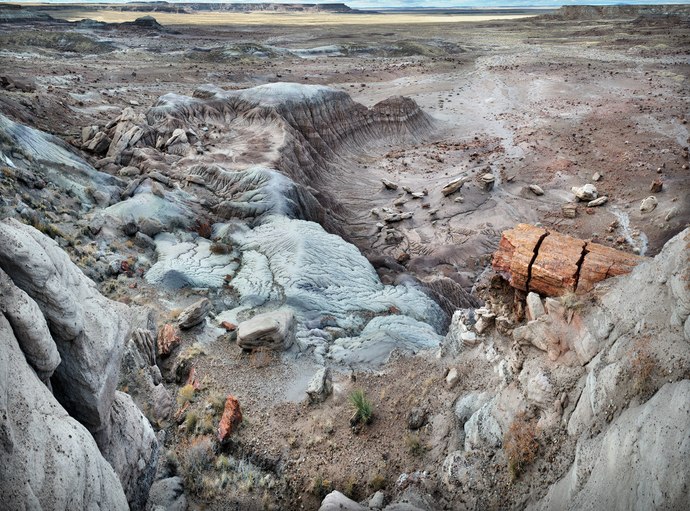Two hundred million years ago, the supercontinent of Pangaea contained the earth's entire landmass. An early variety of pine trees grew along waterways in the region of Pangaea that is now Arizona, where flooding, wind, and death felled whole forests of these 200-foot-tall trees.
'Chinle' means "flowing through." The Navajo Tribe uses this word to describe soils washed down from Arizona's fertile highlands into its otherwise arid canyons and valleys. It also describes the sediment and organic materials that flowed into Pangaea's floodplains, including the remains of animals, trees, and other plants. Overtime, the accumulation of these deposits compressed into sedimentary rock that makes up the Chinle Formation of eastern Arizona's Petrified Forest National Park.
Exquisitely preserved within the formation's colorful layers, the quickly buried conifers, lacking oxygen, did not decay. Instead, they absorbed minerals dissolved in groundwater, replacing their wood over millions of years to become "petrified," a word derived from Ancient Greek (πέτρα) meaning "wood transformed into stone." These rock boles are colorful versions of quartz, stained by iron oxide and including purple amethyst and yellow citrine.
Hunter-gatherers inhabited this land at the end of the last ice age, chiseling projectiles from petrified rock to hunt game such as mastodon and bison. In the early 20th century, collectors removed much of the rock from Jasper Forest, the location of this photograph. However, in time, some people came to believe they had become cursed after absconding rocks – which led to the park service receiving innumerable "conscience letters" with apologies and returned stones. Visiting this park over the last few decades, I've noticed that despite human intervention, the landscape itself is dynamic, transformed by ongoing erosion that continually unearths extraordinary new geologic features.
- James Baker

